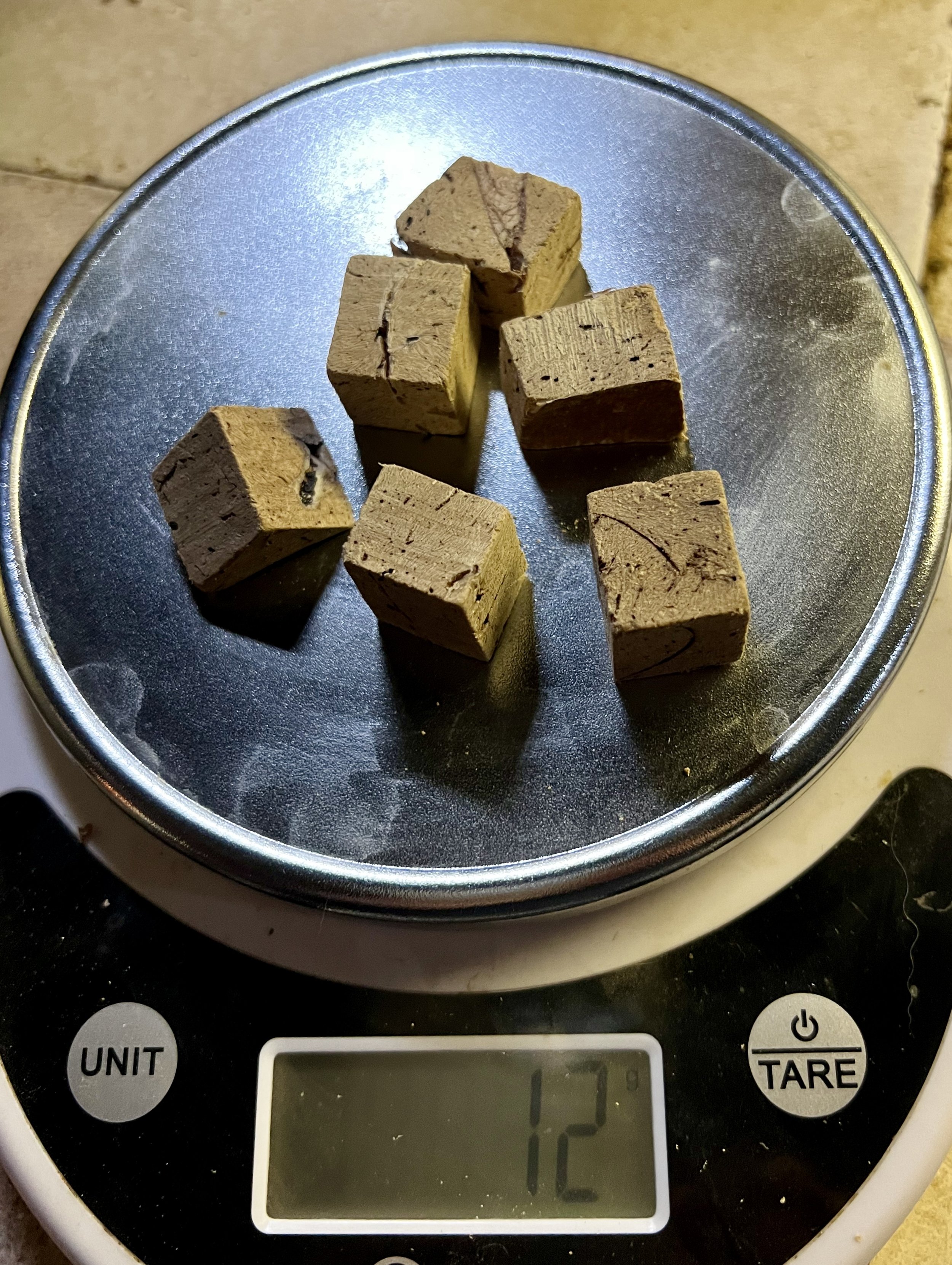Copper in Fresh and Freeze Dried Beef Liver
Project Introduction

Freeze dried beef liver treats have been popular training treats for decades. They are convenient, readily available, and of high value for many dogs.
With the recent increased incidence of copper storage disease in dogs, concern about the copper content of the diet is rising. Beef liver is known to be a rich source of copper. To determine what amount of copper a dog training for these treats might ingest, three popular, nationally available brands of freeze dried beef liver treats were tested. As a follow up, we also tested fresh beef liver, as many fresh food feeders incorporated beef liver in their feeding plans.
Copper Storage Disease
A small amount of copper is an important nutrient for your dog’s body, but too much is toxic and damages the tissues. Copper storage disease is excessive amounts of copper accumulating in the liver due to the inability to get rid of it, or too much in the diet, or both.
Breeds with a higher incidence include, but are not limited to:
- Bedlington Terrier
- West Highland White Terrier
- Skye Terrier
- Doberman Pinscher
- Labrador Retriever
- Keeshond
- Cocker Spaniel
- Crosses from these breeds
There are no specific signs of copper storage disease. Because there are no definitive signs, it is usually diagnosed while running bloodwork for other reasons. Irreversible liver damage can occur if not caught early or untreated.

There are two goals of copper storage disease treatment: remove the excess copper from your dog’s body, and prevent future excess copper consumption. Copper-restricted diets decrease the amount of trace copper consumption. Chelating agents are medications that bind the excess copper in your dog’s system and help excrete it in the urine. In some cases, diet alone is sufficient to control signs in some dogs, while others may need additional therapy with chelating agents.

Test Results
The average weight of a chunk of treat was 2.5 grams across 3 brands.
The average copper content of the treats was 373 ppm (range 359 – 447 ppm).*
This means the average chunk of treat contained 0.9 mg of copper.
A 40 pound dog, eating about 1000 calories per day, should receive no more than 7 mg copper per day, calculated from FEDIAF** standards. Just 8 chunks of these treats exceeds maximum recommendations for the day, without considering the dog’s daily meal(s). It is very plausible for the dog training with these treats to exceed two, three, or even more times the daily limit of copper from the treats alone.
Further, in the USA, there is no maximum limit of copper in commercial dog foods. The combination of feeding a commercial nutritionally complete product with these treats is a perfect storm to create copper storage disease in a susceptible individual.
While this testing only encompassed three brands, caution is advised when feeding freeze dried beef liver treats. Expanded testing and further information will be released in the future. Based on this limited testing, we encourage owners to purchase these treats from companies that have conducted independent laboratory testing. We recommend calculating the amount of copper your dog may be receiving from both treats and meals. If you own a copper sensitive breed, please consult your veterinarian for specific advice.
We also tested fresh livers from both free-range/pastured cattle and grocer store brands. You can download a PDF of our testing results below.
As you can see, the copper content varied greatly, but was generally higher in factory farmed beef. This is a red flag for fresh food feeders who use these livers, or even kibble feeders whose kibbles contain both beef liver and a copper supplement in the added vitamin mineral premix. If you are using any commercial food product of any type, reach out to them for their copper analysis. If they cannot provide it, shop for another brand.
**FEDIAF is the European nitrition standard, which unlike AAFCO contains a maximum for copper amounts.
Our thanks to Steve Brown, Royal Animal Health University, and Animal Diet Formulator for assistance and support with this project.